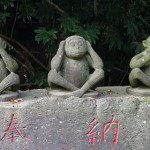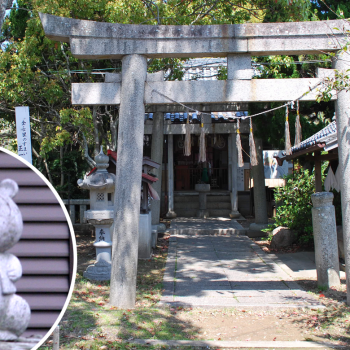![Babymetal in concert, performing their fox hand gesture. By Iancinerate (Own work) [CC BY-SA 3.0 (http://creativecommons.org/licenses/by-sa/3.0) or GFDL (http://www.gnu.org/copyleft/fdl.html)], via Wikimedia Commons](https://wp-media.patheos.com/blogs/sites/632/2016/01/Babymetal01-300x263.jpg)
Veneration of Inari has continued in Japan for well over 1,000 years, but still looks fresh and healthy. This is in no doubt thanks to the ever-changing roles of Inari to fit with the times. Like the fantastic foxes who symbolise Her, Inari is a shape-shifter. He morphed from an agricultural rice deity to one associated with business and finance as Japan modernised and urbanised. She is revered by large corporations, who may donate torii to Inari shrines at considerable cost in order to thank Inari for His blessings on the company; one of Inari’s most prominent corporate worshippers is the internationally renowned cosmetic company Shiseido, who have an Inari shrine on the top of their headquarters.
One of the most recent and exciting signs that Inari’s influence is felt even among Japan’s youth is the international success of J-Pop/heavy metal band Babymetal. J-Pop and J-Rock is still a bit of a niche market outside Asia, yet Babymetal are well-known in the worldwide metal community. The band consists of three teenage girls who wear white fox masks and sing about foxes, and they’ve even come up with their own altered form of the “devil horns” hand gesture which looks like a fox. They say that they do this in order to thank the “Fox God” for their success. Check out their music video MEGITSUNE; fox imagery abounds, as does other very traditional Japanese images. Look out for the rows of torii gates too! (MEGITSUNE is incidentally the Japanese word for “vixen.”)
Another interesting development within Inari worship in recent times is its increasingly international reach. Thanks in part to Babymetal and other Japanese pop culture depicting Inari and related fox imagery, more and more people outside of Japan are getting to know Inari and participate in the Shinto faith. In reaching other cultures, Inari is once again changing as worshippers bring in their own cultural and religious background to their faith and perceive Inari from brand new perspectives. I believe that, like the fox, Inari will continue to attract followers by cleverly adapting to His ever-changing environment and take the form that people of the times need the most.
If you would like to learn more about Inari, I recommend the following resources:
- The Fox and the Jewel: Shared and Private Meanings in Contemporary Japanese Inari Worship, by Karen A. Smyers
This is a must-read for anyone interested in Inari, and is probably the most important English language text about Inari published to date. Detailed, engaging and extremely well researched, The Fox and the Jewel gives a thorough insight into Inari, from His historical origins to Her symbolism to the rich variety of ways in which He is worshipped. - Wikipedia entry on Inari
- Inari Faith International – A growing Facebook community of Inari devotees from around the world; there are some very helpful resources in the Files section
- Musings of an Ujiko – The blog of one of the few non-Japanese individuals entrusted with the enshrined spirit of Inari
- A Fox of Inari – The tumblr of a UK-based Inari devotee who is also a Druid.
















